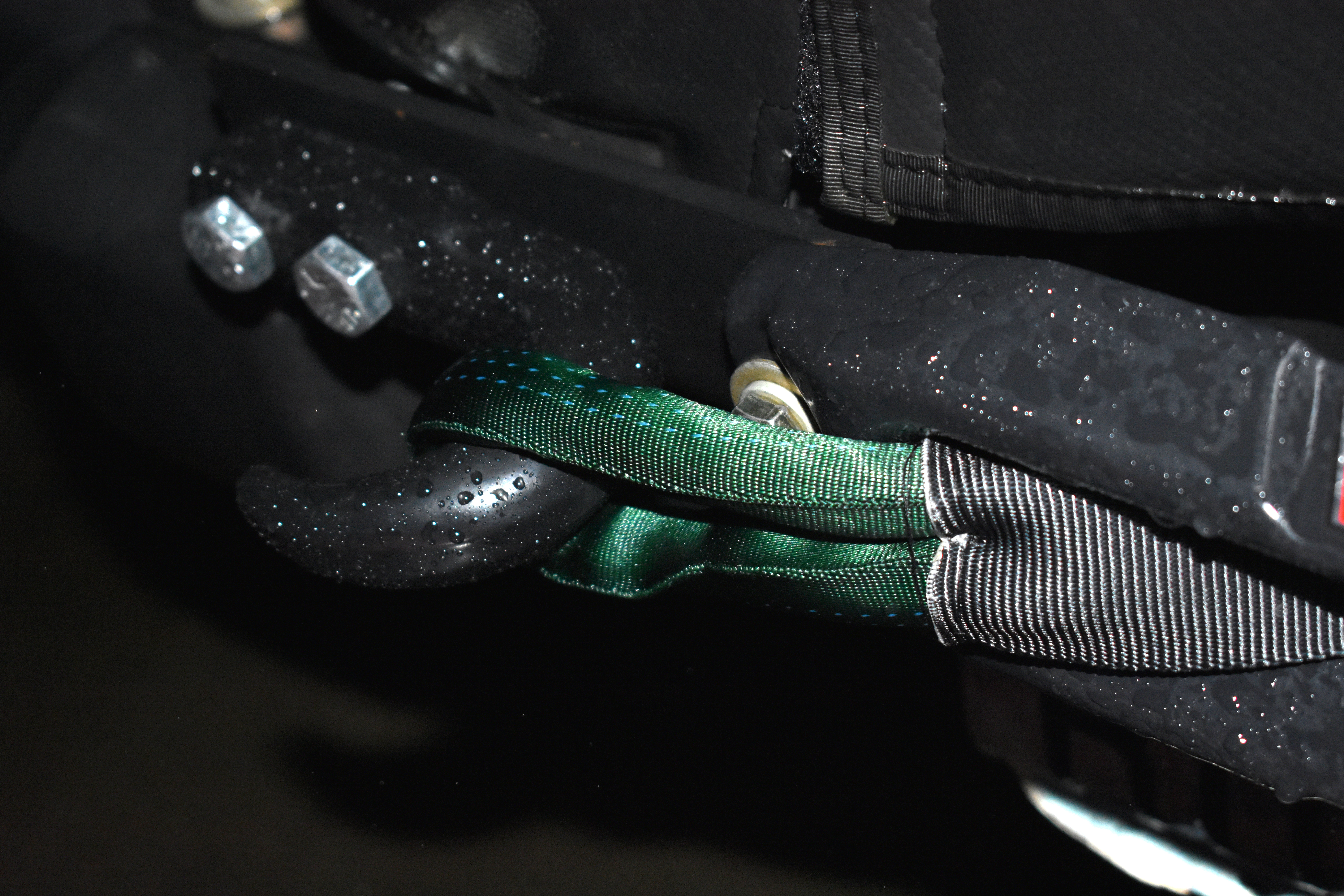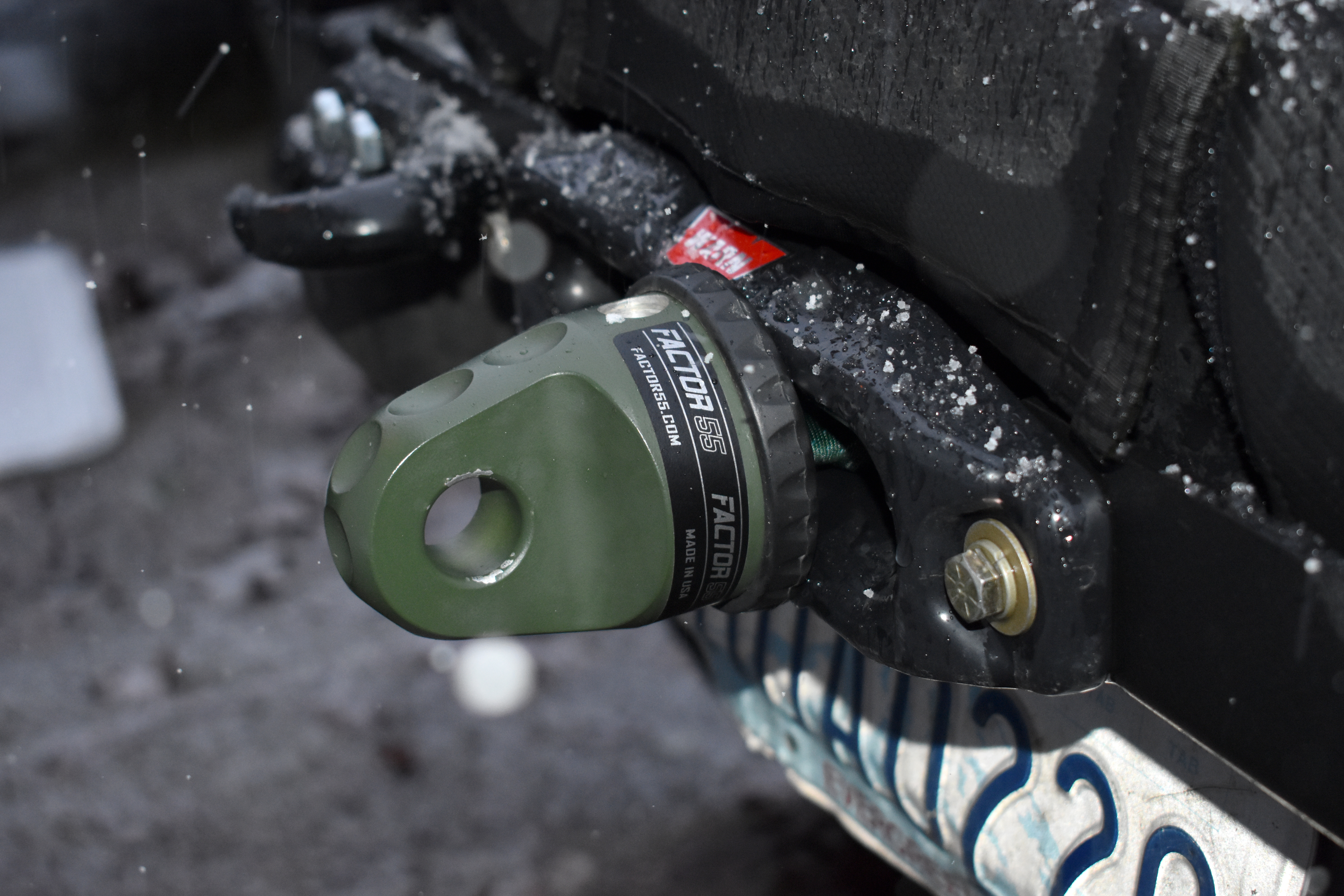Goodbye Winch Hooks
The Problem: Metal, or more accurately mass, is dangerous in a winching or recovery setup. When something goes wrong in a winch recovery and the winch line snaps, things tend to go flying. If a heavy metal object is attached to the line, it can launch with a lot of force and create a very dangerous projectile.
The "Solution": Winching always has inherent dangers but you can minimize the risk by minimizing the mass in your setup. High end winch hooks try to accomplish this by being made of ultra-light materials, but this leads to the question, why have the hook in the first place? This week I took my Factor 55 ProLink off of my TJ and spliced a simple soft-loop into the end of my line, I have essentially the same setup as before, a closed loop in the end of my line that I can pass a shackle through, so why have the metal hook there anyways?
ProLink VS. Soft-Loop:
There are a few notable differences between my new simple loop and my old ProLink:
- Mass/Safety
- The Size of The Hole
- Repairability
- Price!
1: Since the soft loop eliminates the metal from a hook entirely, there's not really any safer option out there, it's only the weight of the winch line itself left.
2: The ProLink has a rigid hole designed to fit a metal shackle, it's possible to squeeze a soft shackle through the hole too, but it's a fairly small hole. The soft loop
can be any size you want, and can allow you to pass whatever you want through it. Personally, I
made my loop a little under the size of my fist, this lets me reach through the eye to pull things through without any issues, and it is much more convenient than the ProLink so far.
3: Since the soft loop is made from a simple splice, I can easily 100% repair my winch line on the trail and be completely ready to go. If my ProLink had broken, there's no real
way to repair it on the trail, and I would likely have
ended up with a temporary soft loop anyways.
4: This is probably the largest difference, a soft loop can cost $0 on top of your winch line as opposed to the ProLink's ~$150 pricetag. Even after I bought the not-strictly-necessary
nylon sleeve to protect my soft loop, the project was well under $20, and I have
enough material to make several more identical soft loops.
Here you can see some of the differences, notably the size of the hole and how much more the ProLink sticks out from the winch plate:



This project was also astonishingly easy and simple to do, I took my hook off, removed the line from the winch, did the splice, and I was done, the whole process probably took 30-45 minutes,
and I had never spliced winch line before. If you would like to do this
on your own winch line, the following links will explain some of the ideas I used in mine, and will hopefully give you enough info to make your own. Using a nice fid helps, but is not needed, many
people use hollow knitting needles or even pens in a pinch, so anyone
should be able to do this project with a little bit of creative thinking.
The Splice I Used
Winch Extension Tutorial
This setup is not entirely without downsides, since the end loop isn't rigid, you have to think a little bit about bend radius if you frequently connect to thin mounting points directly with your loop, but for the average person using metal or soft shackles, this isn't really an issue with 3/8" winch line. UV damage should also be addressed, since the end of the line is no longer protected by the hook, I recommend covering the eye with something to keep the UV off of the winch line directly, I used nylon tubular webbing, and it works quite well so far. This loop also doesn't compare to an open-able hook, and you'll need a shackle to use the winch line, but this changed nothing for me coming from the ProLink, and I still think it's worth it for the safety.
Overall, I'm super impressed that such a cheap an easy project ended up with such a safe and convenient result. I'm glad I tried this project, and I plan to run this setup for a long time.
If you like this project, but don't want to splice your own winch line, there are winch ropes you can buy which come with pre-made soft loops, or even built in soft shackles ready for use! However, the project is really easy, and a plain winch line can be had for about a fifth of the price of those premium winch lines.
-Top Of Page-


.png)
